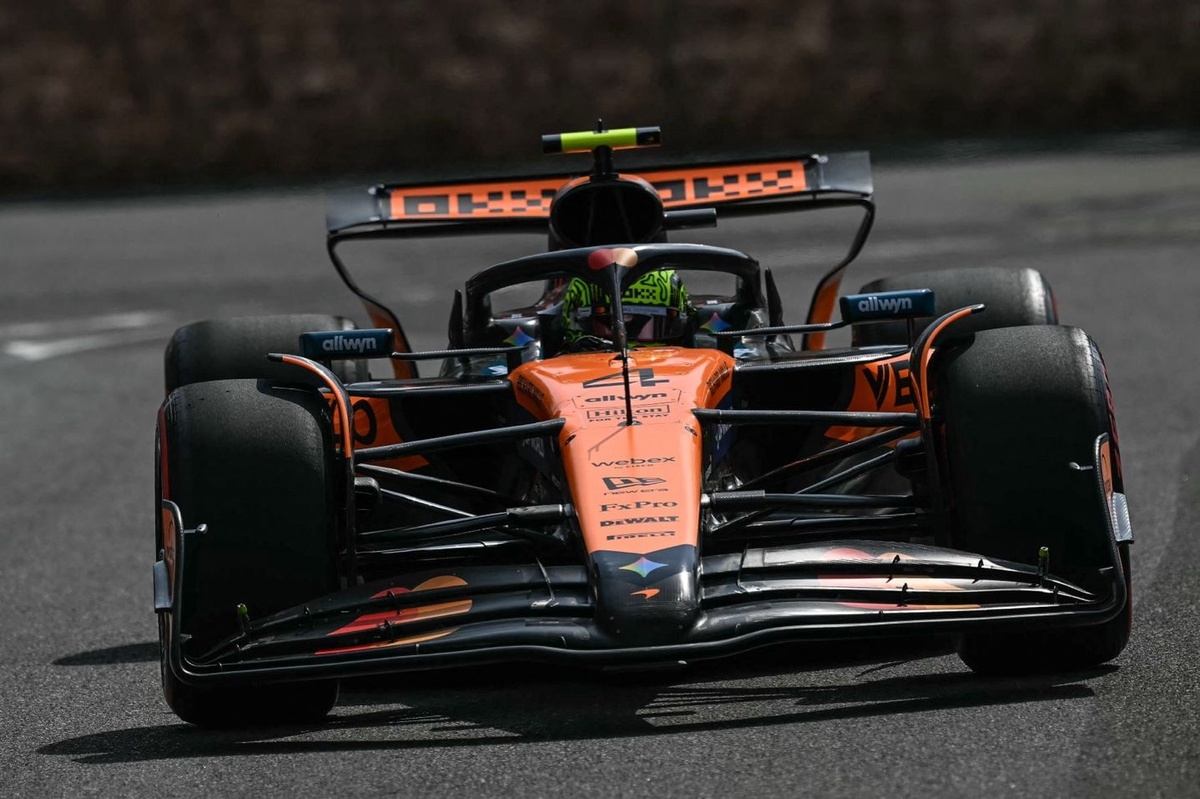Norris fastest in blustery Baku: McLaren tops FP3 ahead of Verstappen
Lando Norris set the pace in final practice for the Azerbaijan Grand Prix with a 1:41.223, beating Max Verstappen by around two tenths, with Oscar Piastri and Lewis Hamilton next up. The session was shaped by powerful winds and a "green" track that evolved rapidly toward the chequered flag, setting the stage for an unpredictable qualifying.
Conditions rule the hour
- Gusty winds approached 60 kph in places, with averages near 30 kph, unsettling cars from the tight castle section to the long run to Turn 1.
- Morning rain and a layer of leaves initially left the 6 km street course low on grip; times tumbled as the surface cleaned up.
Key moments and movers
- Norris rebounded after damaging his left-rear suspension in FP2, overcoming an early "sketchy" front-end feel to deliver the benchmark lap.
- Verstappen improved late as Red Bull continued to validate a low-drag approach that worked at Monza, ending a solid P2.
- Piastri had a couple of off-moments, including a Turn 1 detour, before stitching together a lap for P3; Hamilton hovered close behind.
- Charles Leclerc brushed a barrier on one attempt and had a scruffy session; Alex Albon briefly surged to P2 as the track peaked.
- Liam Lawson suffered a dramatic spin near the top of the main straight but recovered to post competitive times.
- Behind the lead quartet, Kimi Antonelli led the midfield, followed by George Russell, Albon, Oliver Bearman, Lawson and Leclerc completing the early top 10 picture.
Red Bull’s read on form
Team principal Laurent Mekies said the last few rounds have featured "hard" experimentation on set-up direction across venues such as Zandvoort, Budapest and Monza, with Baku serving as another litmus test. With slipstreaming worth multiple tenths along the 2.2 km flat-out section, he cautioned that timing a tow in qualifying will be tricky. McLaren and Ferrari, he noted, remain the reference threats on pure pace.
Qualifying outlook
Expect drivers to hunt a slipstream and to manage gusts that vary corner to corner as buildings either shield or funnel the wind. The combination of long straights, heavy braking, and narrow walls should keep margins razor thin.

